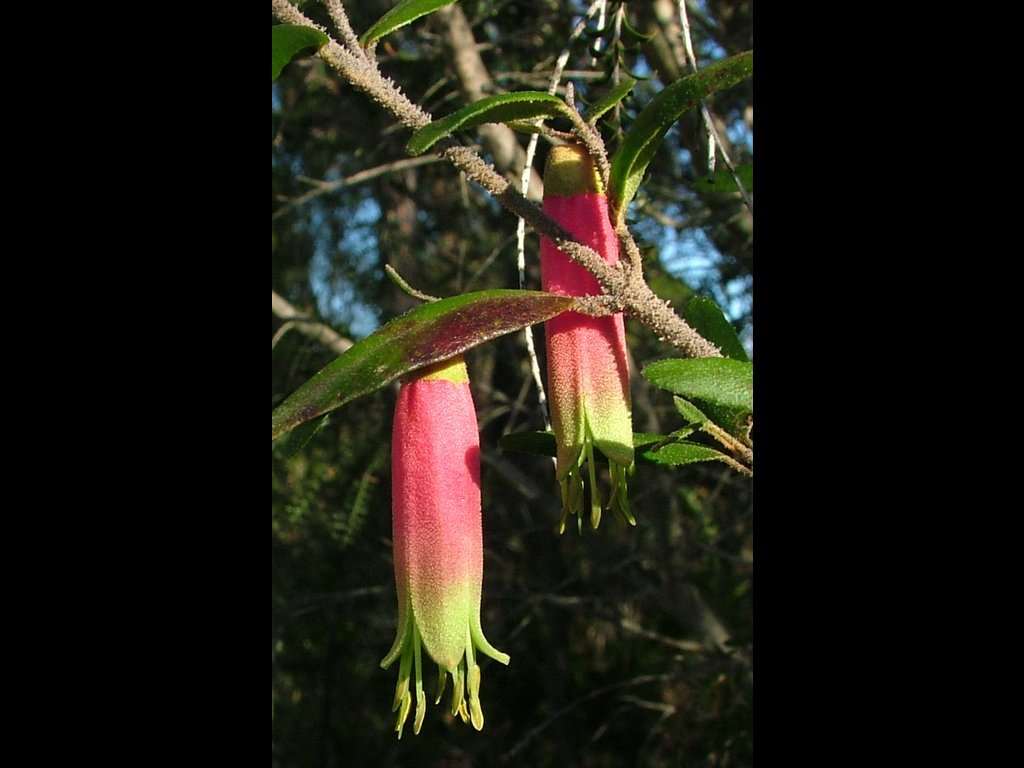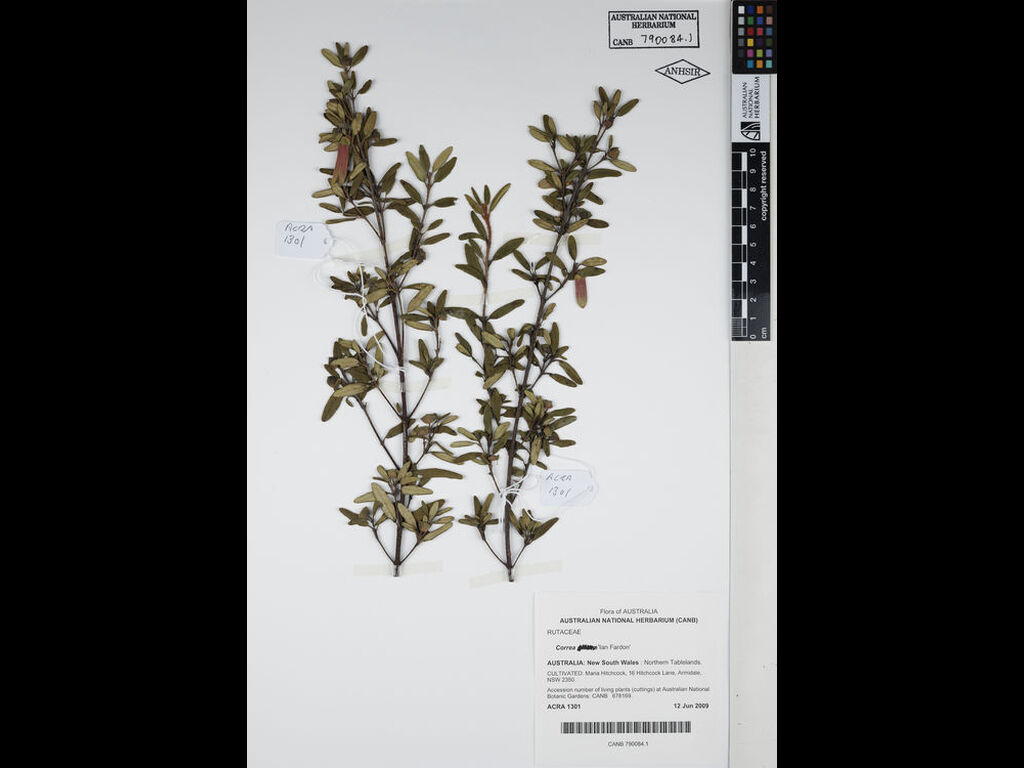Correa 'Ian Fardon'
- File Number
- 1301
- ACRA Field Book Number
- 1301
- Registration Date
- 28/01/2010
- Application Received
- 12/06/2009
- Family
- Rutaceae
- Cultivar Name
- Correa 'Ian Fardon'
- Origin
- Origin unknown. Grown by the late Rev. Ian Fardon in Armidale, who passed on cuttings to members of the Australian plants Society during the 1980s. Named and application prepared by Maria Hitchcock on behalf of the Australian Native Plants Society, Correa Study Group.
- Characteristics
- Large spreading dense shrub with upright habit to 1.5 m x 2 m. It has long ascendant stems. Leaves are on short petioles, dark green, lanceolate, shiny, glabrous, leathery and convex on top, pale green and velvety with tiny rusty stellate hairs underneath and having obtuse tips. 28 mm x 8 mm in size. It has the typical aromatic smell of leaves in the C. glabra group. The ends of young branches are rusty tomentose. Flowers on short pedicels occur singly at the ends of short branchlets. The pedicels also have a pair of deciduous bracts. The corolla, which is 2.2 cm x 0.8 cm in size, is reddish pink with mid green tips and a band of purplish green in between. The tips are barely recurved. Stamens are exerted. The calyx is green and cup-shaped with minute teeth. The calyx folds over maturing seed. Peak flowering is from Summer to Winter with spasmodic flowering most of year. Diagnosis: It appears to be a garden hybrid with C. glabra var turnbullii and C. reflexa as possible parents. This variety differs from C. glabra var turnbullii, in that the leaves are smaller and narrower and have some rusty tomentum on the underside. The flowers appear to be longer and have a band of a third colour on the corolla. It still has the characteristic aromatic smell of C. glabra varieties and the flower colour is similar to other C. glabra var turnbullii forms.
- Cultivation
- Drought and frost hardy. This cultivar is a very vigorous grower and is highly adaptable to a wide range of soils and climatic conditions. It withstands long periods of drought and requires almost no maintenance, making it ideal for amenity planting. Highly bird attractive and sets seed readily, making it a useful variety for breeding purposes. Suited for hedges or low screens as well as shrub borders and large rockeries. Prune to maintain density and shape.
- Publication
- Hitchcock, M. (2010), Correas: Australian Plants for Waterwise Gardens: 113-114
- Colour Coding
- RHS Colour Chart 1995: Corolla: 181B, 145B Leaves: 136B
- Propagation
- Cuttings from semi-firm new growth
- Applicant Name
- Maria Hitchcock for the Correa Study Group
- Uses
- As part of the shrubbery, screen planting or as a showy feature plant. Bird attracting.
- Availability
- Specialist native plant nurseries
- ANBG Accession Numbers
- -
- NSL ID
- -

